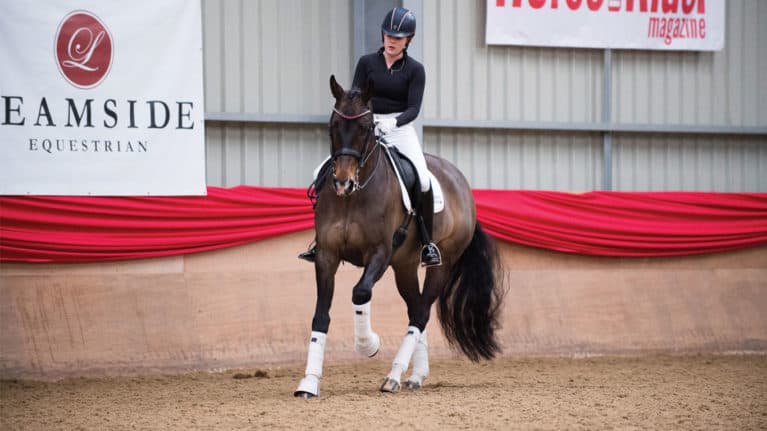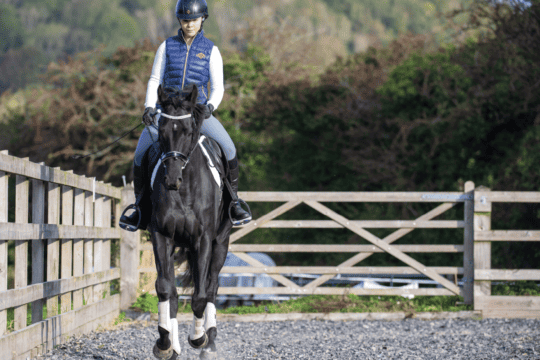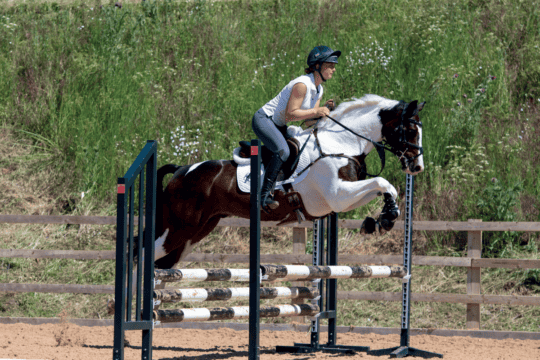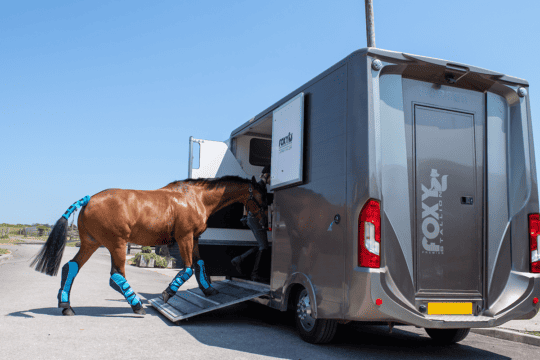-
Riding Schooling and Training
-
Health and Veterinary
-
Management
-
Mind Matters
-
Buying and Selling
-
Insurance Advice
FAQs
Featured Professional
Carl Hester shows you how to step up your horse’s training and add sparkle in the ring

There are few things more satisfying than the moment when your horse gets what you’re asking him to do. When you’ve been putting in the hard work from the beginning, it’s a great reward for your efforts to realise that you’re now sitting on a bonafide dressage horse. But it’s at this point that many riders feel as though they’ve hit a wall – they’ve developed their horse to the point where he’s a solid campaigner in the ring, but they’re not sure how to take him to the next level and add sparkle to his work.
Aiming for expression
It’s important to focus on working with your horse’s natural stride rather than trying to ride for a big, expressive trot, especially if he’s still green. An inexperienced horse has to learn how to balance and carry himself, so asking for a big gait too soon makes that difficult for him and can affect his confidence. Many riders think their horse must have a lofty trot to be successful in the dressage ring, but this is actually the gait that’s the easiest to improve.
Once you’ve developed a correct, balanced way of going, start to add expression using transitions within the pace. When your horse can lengthen his stride, you can teach him to collect it, then use that lift to create the impressive movement that everyone covets. Collection isn’t just a shortening of the stride, but rather a gathering of energy that, when tempered and released, creates suspension. Use the short side of the arena to ask for more collected steps, then let your horse move forward down the long side or across the long diagonal, making a clear transition back to working or collected trot just before you reach the next short side. This will help him to navigate the short side in balance, and will also stop him from falling onto his forehand and losing the energy from behind as he lengthens his stride.
TOP TIP – Use half-halts to continually add more energy to your horse’s collected work by asking for medium steps with your legs and collected steps with your hands.
Flex it out
Many riders use flexion exercises and stretches with their horses to encourage loose back muscles, a longer, relaxed stride and a basic understanding of independent movement. Far too often, though, riders stop incorporating these exercises once their horses are more established in their work.
It’s important to continue to encourage your horse to stretch and work over his back in a way that may be counter intuitive to how he’s built. A horse who’s built uphill will be more cautious about bringing his frame down, while a downhill horse will struggle to come up. Spend time riding the opposite of the horse that you’re on – this will not only stretch all his muscle groups, but it will also give you a more malleable horse to work with.
Be as consistent about working your horse out at the end of a session as you are about working him in. Spend a few minutes changing the rein and riding figures-of-eight and serpentines while encouraging him to stretch out along his topline without becoming unbalanced. One circle won’t do – he needs to be given enough time to get comfortable and confident with maintaining his own balance without being held in place. Use a little bit of movement through your inside rein to encourage him to seek the bit and work around your inside leg, but don’t be tempted to create an artificial stretch by see-sawing your reins. This will only encourage him to drop down in front of his withers, rather than work over his back.
Jargon buster
What does ‘through’ mean? It’s a term that’s bandied about a lot – everyone’s heard at a competition or seen on a score sheet the comment ‘horse not through’. But if you ask people to explain it, you’ll get so many different answers.
Being through starts with the hindleg. I like to think of a horse’s body as being made up of two bows – one that goes from the front legs up through the shoulders and down to the bit, and one that goes from the hindleg up under the saddle. Both of these shapes need to be round in order for your horse to work sufficiently through the aids and use his body correctly. If one piece is out of place then it all falls apart – for example, if he tightens his back, then
starts to offer up unsolicited flying changes as a result.
All change
Flying changes are an essential skill to have in your arsenal if you want to compete at Advanced Medium or above, but if your sights are set on a lower level or if you also jump, they’re equally useful. There’s a bit of a stigma surrounding changes, as many riders don’t understand the mechanics of how to ride them, so they find them intimidating. However, they needn’t be scary.
The most common problem I see is a lack of forward motion in the change, which makes it impossible for your horse to perform it cleanly and evenly. This is expensive in a test – a change that’s late behind might score a 2, but with a bit more forward motion there would be more jump and a quicker response, then it could score an 8. Be bold when you ride into the change, be it simple or flying. Create an active, rhythmical canter and think about straightness rather than forcing your horse to shorten endlessly. Ride forward into the change, then collect afterwards, focusing on keeping the activity of the gait.
You can use your whip to encourage your horse forward out of the change, but it’s important to get the timing right. Give with your hand and touch him with the whip at the same moment that you use your new outside leg to ask for the change.
TOP TIP – The aids for a change should always be quick and effective, rather than slow and dragging – think about using a tap with the whip and a nudge with your heel or spur rather than squeezing endlessly with your leg. If you drag out any aid for too long it becomes white noise to your horse and he’ll learn to tune it out.
Beyond the basics
No matter what level you ride at, the basics are incredibly important. So often a niggling training issue can be resolved by taking the simple approach and making it easy for your horse to solve. If you could simplify a maths problem down to simple subtraction, why would you approach it as advanced calculus?
Don’t get hung up on the fact that you may now be at a level at which your tests will be ridden in sitting trot – create no-pressure situations at home so your horse can produce his best work. No matter what level you and your horse are at, never be afraid to get off his back in training, be it through rising trot or a light seat in canter. It’s a simple trick, but the rewards speak for themselves. The first time I saw Isabell Werth school a horse she was doing rising piaffe. She had a long rein and rode passage before transitioning to rising piaffe, which she maintained for 12 steps. It was an incredible thing to see – her horse loosened his back and let go of any tension, and was able to just move underneath her. This is the sort of thing you’ll never find in a book, and certainly I had never even heard of it, but the benefits are obvious and immediate. If Isabell Werth, one of dressage’s most decorated riders, is happy to incorporate the basics into her horses’ more advanced work, then we should all be happy to follow suit.
TOP TIP – Being a thinking rider goes beyond intuitive training – it also means being honest with yourself about your own weaknesses, working to improve them in the long-term and learning to mask them in the short-term. One easy fix that many riders should try? Wearing dark gloves to hide unsteady hands!
It’s the thought that counts
Being a thinking rider is just as important as being an athletic rider and much more valuable than being a naturally talented one. It means that you don’t let yourself go on autopilot when riding and that you can justify each of your actions in the saddle. It also means occasionally going against the textbook way of doing something in order to better suit the horse you’re sitting on. For example, most riders – and most books or training articles – say you need to be riding your horse’s best canter before schooling changes, because that combination of balance, collection and suppleness is key to a clean change. This isn’t necessarily wrong, but it’s also fairly limiting. Some horses’ canter improves through schooling changes, and others won’t demonstrate that level of lift and suspension until they’ve had to tap into it while schooling these movements.
The path to success is rarely linear, so try different approaches when riding and maintain a continuous analysis of what works and what doesn’t. Over time, this will become an innate and intuitive understanding of what makes your horse tick – it’s called feel.
















